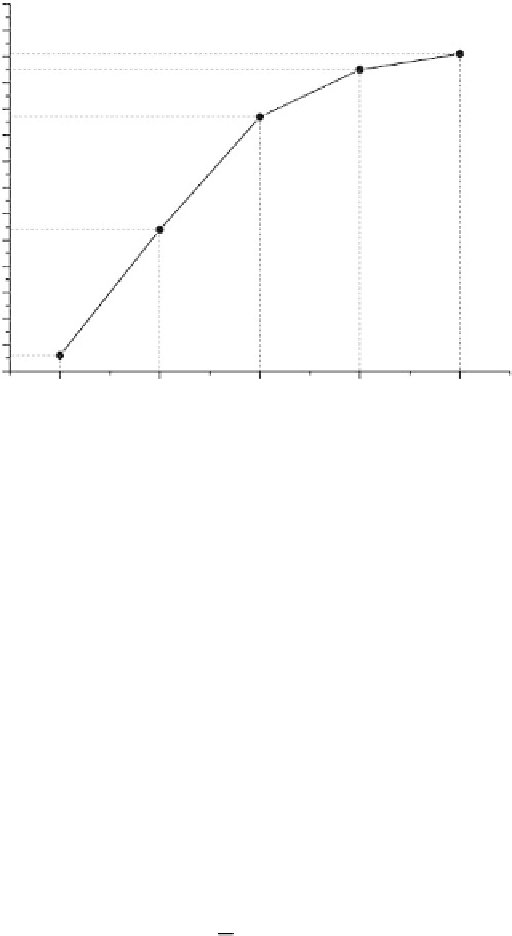Biomedical Engineering Reference
In-Depth Information
3.7
3.6
3.5
3.4
3.3
3.2
3.1
3.0
2.9
2.8
2.7
2.6
2.5
2.4
2.3
2.5
2.0
1.5
Element size (mm)
1.0
0.5
FIgure 20.4
The convergence results of the FE model.
mechanical properties unchanged. The normal strains on the PDL surface were regarded
as biomechanical stimuli initiating orthodontic tooth movement. A linear relationship was
assumed between external remodeling and strain magnitude within the range of 0.03%-
0.3% strain and the tooth movement rate was expected to reach a limit after a certain strain
(ε). Tooth movement velocity (
R
.
) was determined by Equation 20.1:
0.2898
1.071
0
ε
0.3
0.03
>
(20.1)
R
=
ε−
0.0322
<>
ε
0.3
ε
>
0.3
Internal remodeling was considered the mechanism for the redistribution of cancellous
bone density under the action of orthodontic loading. According to Huiskes' approach
(Huiskes et al. 2000; Weinans et al. 1993), the strain energy density (SED)
U
was adopted
as the biomechanical signal that controls internal remodeling of the cancellous bone, with
1
2
U
=σ
ij
(20.2)
ij
where
ε
ij
is von Mises strain and
σ
ij
is von Mises stress. The value of the SED was compared
to a homeostatic one (
k
). A “lazy zone,” in which no net change in bone density occurs, was
incorporated in the formulations. The set of governing equations for internal remodeling
was expressed in the following equation:
for
>+
−≤≤+
<−
Us k
sk Us k
Us k
(1)
BU
(
−+
(1)
sk
d
d
ρ
=
(20.3)
for(1)
(1
)
0
t
BU
(
−−
(1)
sk
for
(1)
where
s
is the threshold level that marks the borders of the lazy zone and
B
is the remodeling
coefficient.

Search WWH ::

Custom Search